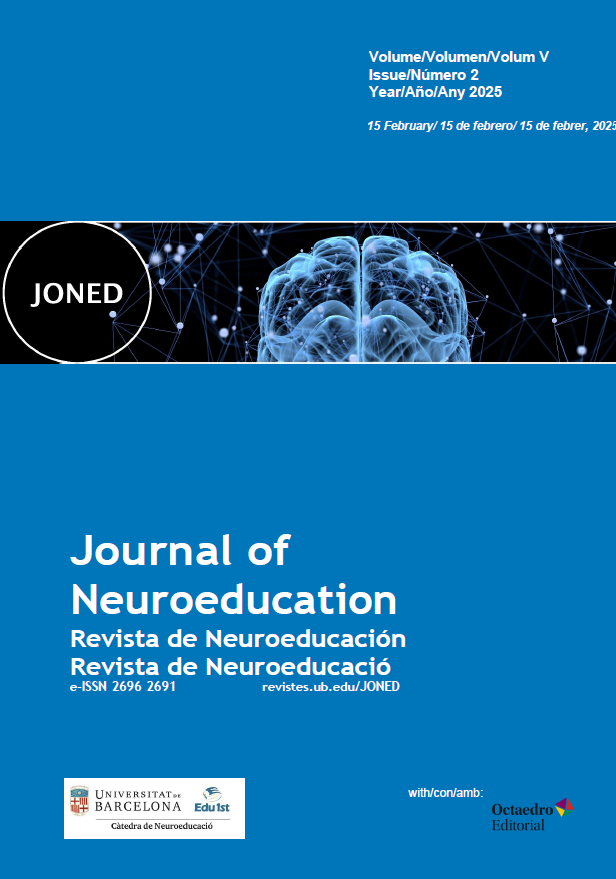The PONCE mt: I can help you learn better!
A channeling test can help improve our brain
Keywords:
Educational inclusion, PONCE mtAbstract
In this article we present a test that allows school-age children to have support to face language and dental problems that can be detected by classroom teachers and channeled; the cognitive part goes to the speech therapist and the clinical part goes to the orthodontist so that the process of including the child in the classroom can be carried out.
We invite the reader to a medical check-up to detect similar characteristics and feel confident in receiving care in a harmonious and trusting environment, always seeking their well-being in this increasingly inclusive society.
We propose three simple steps to give rise to this review, detecting the needs and together with your teacher you can be channeled in a timely manner, PONCE mt will facilitate this procedure as it is an Organic Test to channel and intervene language specialists and orthodontists.
Downloads
References
Carro Olvera A, Lima Gutiérrez JA, Carrazco Lozano MEE. Los consejos técnicos escolares para la inclusión y equidad educativa en la educación básica de Tlaxcala, México. scielo. 2018;22:146-75.
Boroel Cervantes BI, Sánchez Santamaría J, Morales Gutiérrez KD, Henríquez Ritchie PS. Educación exitosa para todos : la tutoría como proceso de acompañamiento escolar desde la mirada de la equidad educativa. Revista Fuentes. 2018; 20:91-104.
Briones Cedeño G, Benavides Bailón J. Estrategias neurodidácticas en el proceso enseñanza-aprendizaje de educación básica. Revista de Ciencias Humanísticas y Sociales (ReHuSo). 2021;6(1):72-9.
Eduardo BP, Stephany LS. Identificación temprana de trastornos del lenguaje. Revista Médica Clínica Las Condes. 2011;22(2):227-32.
López Villaseñor ML, Calvo Expósito JA. Rehabilitación morfológica en trastornos del lenguaje: necesidad clínica avalada por evidencia experimental. Revista Latinoamericana de Psicología. 2013;45:111-20.
Goswami U. Neuroscience and education: from research to practice? Nat Rev Neurosci. 2006;7(5):406-11.
Peyro Paz M, Rojas García C, Flores Rodríguez P. Modelo neuroeducativo de canalización temprana para niños con problemas de aprendizaje. Journal of Neuroeducation. 2024;4.
Miyatsu T, Oviedo V, Reynaga J, Karuzis V, Martinez D, O'Rourke P, et al. Transcutaneous cervical vagus nerve stimulation enhances second-language vocabulary acquisition while simultaneously mitigating fatigue and promoting focus. Sci Rep. 2024;14(1):17177.
Paul CM, Jimena RP, Katia MV. Neurobiología del sueño y su importancia: antología para el estudiante universitario. Revista de la Facultad de Medicina UNAM. 2013;56(4):5-15.
Pellegrino M, Ben-Soussan TD, Paoletti P. A Scoping Review on Movement, Neurobiology and Functional Deficits in Dyslexia: Suggestions for a Three-Fold Integrated Perspective. International Journal of Environmental Research and Public Health. 2023;20(4):3315.
Reeck C, Ames D, Ochsner K. The Social Regulation of Emotion: An Integrative, Cross-Disciplinary Model. Trends Cogn Sci. 2016;20(1):47-63.
Temple E, Posner M. Brain mechanisms of quantity are similar in 5-year-olds and adults. Proceedings of the National Academy of Sciences of the United States of America. 1998;95:7836-41.
Dovilė S, Rimantas Ž, Julius Ž, Rita D, Audronė J. Efficiency and effectiveness analysis based on educational inclusion and fairness of European countries. Socio-Economic Planning Sciences. 2022;82:101-293.
Cantor J, Sánchez J, Aristizábal Oviedo D. Prácticas pedagógicas para la inclusión en dos modelos educativos alternativos. Revista CS. 2021(34):43-69.
Serena IP, Andrea F, Maria B, Stefano M, Vincenzo DA, Giulio AB. Diagnostic accuracy of screening questionnaires for obstructive sleep apnea in children: A systematic review and meta-analysis. Sleep Medicine Reviews. 2021;57:464.
Downloads
Published
Issue
Section
License
Copyright (c) 2025 Paola del Rosario Flores-Rodríguez

This work is licensed under a Creative Commons Attribution-NonCommercial 4.0 International License.
The authors who publish in this journal agree to the following terms:
a. Authors retain copyright and grant the journal the right of first publication
b. Texts will be published under a Creative Commons Attribution Non Commercial License that allows others to share the work, provided they include an acknowledgement of the work’s authorship, its initial publication in this journal and the terms of the license, and not for commercial use.



